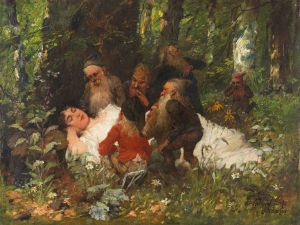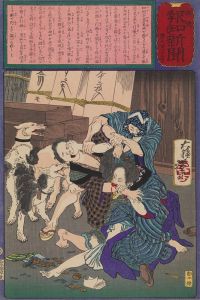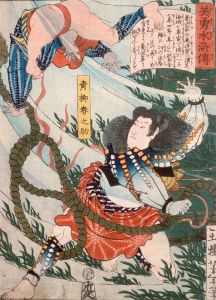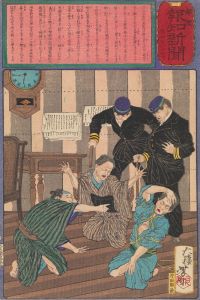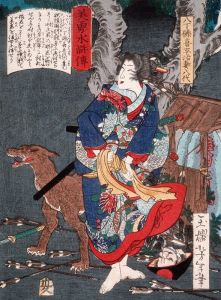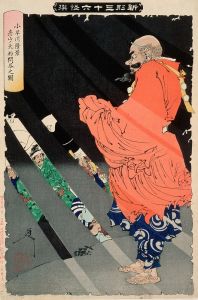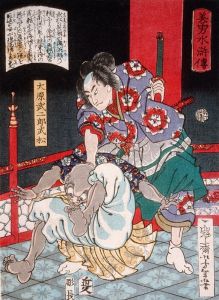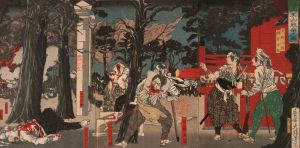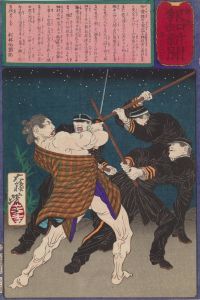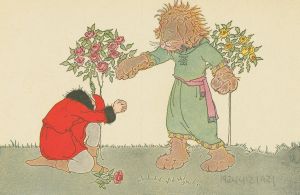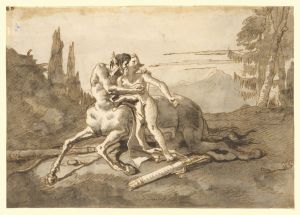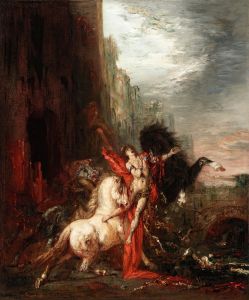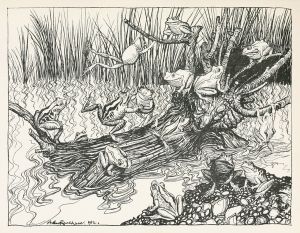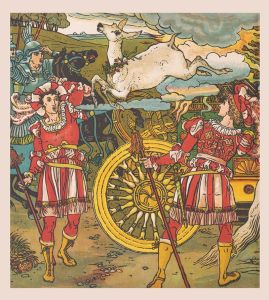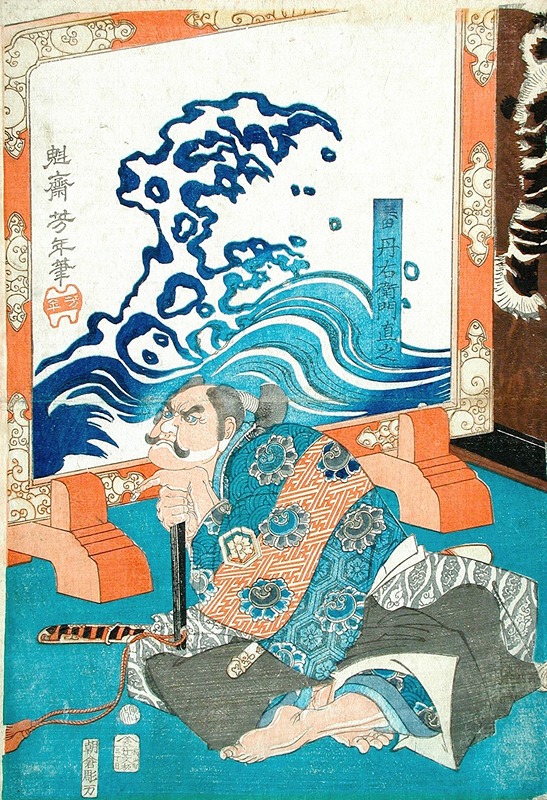
Ban Danemon Naoyuki Conquers the Old Raccoon Dog at Fukushima’s Mansion
A hand-painted replica of Tsukioka Yoshitoshi’s masterpiece Ban Danemon Naoyuki Conquers the Old Raccoon Dog at Fukushima’s Mansion, meticulously crafted by professional artists to capture the true essence of the original. Each piece is created with museum-quality canvas and rare mineral pigments, carefully painted by experienced artists with delicate brushstrokes and rich, layered colors to perfectly recreate the texture of the original artwork. Unlike machine-printed reproductions, this hand-painted version brings the painting to life, infused with the artist’s emotions and skill in every stroke. Whether for personal collection or home decoration, it instantly elevates the artistic atmosphere of any space.
Tsukioka Yoshitoshi (1839–1892) was a prominent Japanese artist known for his work in ukiyo-e, a genre of woodblock prints and paintings that flourished in Japan from the 17th through 19th centuries. Yoshitoshi is often celebrated for his innovative approach to traditional subjects and his ability to capture the complexities of human emotion and the supernatural. One of his notable works is "Ban Danemon Naoyuki Conquers the Old Raccoon Dog at Fukushima’s Mansion," which is part of his series "New Forms of Thirty-Six Ghosts" (Shinkei Sanjurokkaisen).
This particular print depicts a scene from Japanese folklore involving Ban Danemon Naoyuki, a legendary samurai known for his bravery and martial prowess. The story centers around his encounter with a mythical creature known as a tanuki, or raccoon dog, which is a common figure in Japanese mythology and folklore. Tanuki are often portrayed as shape-shifters with the ability to transform into various forms, sometimes using their powers to trick humans.
In the artwork, Yoshitoshi illustrates the moment of confrontation between Ban Danemon and the tanuki at Fukushima’s mansion. The composition is dynamic, capturing the tension and drama of the encounter. Yoshitoshi's use of color and line work is characteristic of his style, combining traditional ukiyo-e techniques with a more modern sensibility that was emerging during the Meiji period in Japan.
Yoshitoshi's "New Forms of Thirty-Six Ghosts" series, created between 1889 and 1892, is significant for its exploration of supernatural themes and its reflection of the changing cultural landscape of Japan during the late 19th century. The series includes a variety of ghost stories, legends, and myths, each rendered with Yoshitoshi's distinctive artistic flair. His work often delves into themes of fear, the unknown, and the supernatural, which were popular subjects in Japanese art and literature.
The print of Ban Danemon and the tanuki is notable for its attention to detail and the way it captures the essence of the story. Yoshitoshi's ability to convey emotion and movement within the static medium of woodblock printing is evident in this piece. The depiction of the tanuki, with its exaggerated features and mischievous expression, contrasts with the stoic and determined demeanor of Ban Danemon, highlighting the clash between human and supernatural forces.
Yoshitoshi's work, including this print, is highly regarded for its artistic merit and its contribution to the ukiyo-e tradition. His prints are considered valuable cultural artifacts that provide insight into the folklore and artistic practices of his time. Today, Yoshitoshi is remembered as one of the last great masters of ukiyo-e, and his works continue to be studied and appreciated for their historical and artistic significance.





